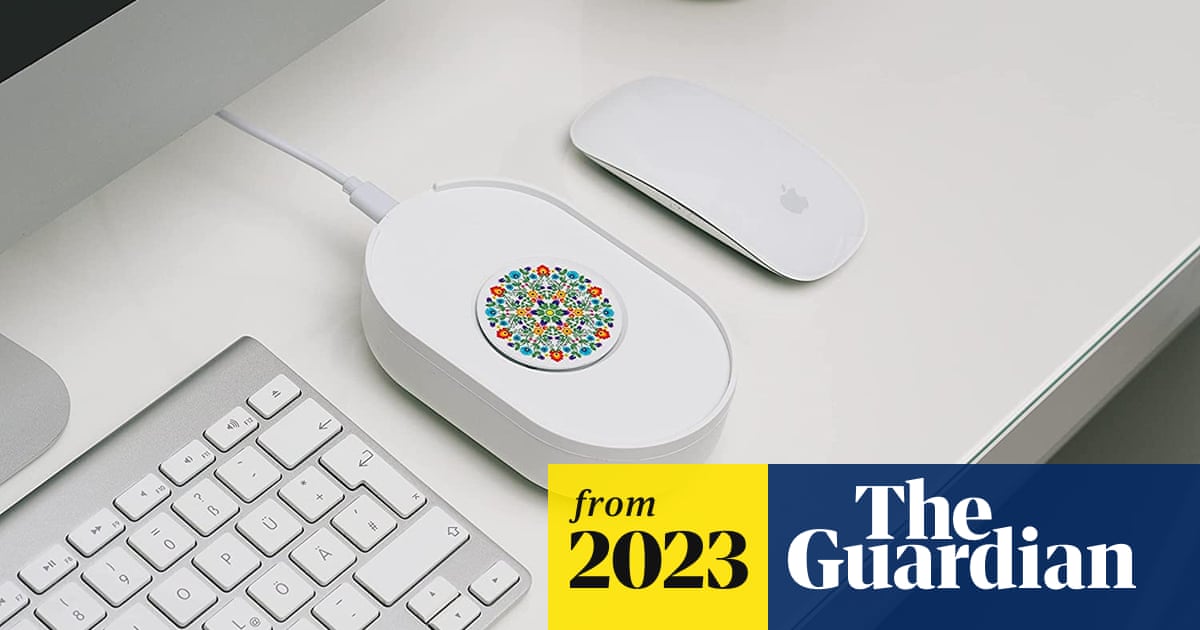
Watching Premier League matches can be difficult when you live in the US. For midweek games, the kickoff is often in the middle of the work day, posing a challenge even for remote workers: how do you keep your online status from going idle?
The solution is a mouse mover: a tool that keeps your cursor jiggling even as you turn your full attention to the game. And last month, the Premier League’s US Twitter feed endorsed goofing off by offering a “PLinUSA mouse mover” to a lucky winner.
Working hard or hardly working during #ARSMCI today?
Take a break during those workday matchdays with a PLinUSA mouse mover! 😏
To enter for a chance to win:
1️⃣ RT
2️⃣ Reply with 🤫 pic.twitter.com/L4zquaVBFj— Premier League USA (@PLinUSA) February 15, 2023
The devices have existed for years, but their popularity soared as people began working from home early in the pandemic. They come in different varieties, ranging from cradles with spinning discs in the middle to DIY creations made from Legos. But they are united as a symbol of resistance against workplace surveillance – even if their very existence points to a dystopian future.
As working from home was normalized in 2020, concerns grew about bossware – software that keeps a close eye on remote workers by, for instance, tracking their mouse movements. Work-communication platforms like Microsoft’s Teams might be less Big Brother-ish, but they can still show when a worker has been “idle” – a word that implies they’re in a hammock with a cocktail when they might have perfectly legitimate reasons to have stepped away from their computer: caring for a child, going to the bathroom, rescuing the dog from a standoff with a rabid raccoon. And even if they are just taking a break, does the boss really have to know?
When bosses keep such close tabs on their staff, it fosters a “lack of trust between employer and employee”, says Diana Rodriguez of Tech8 USA, a Texas-based company that makes popular mouse movers, including small pads that physically move your mouse and USB sticks that simply shift the cursor. What’s more, a lot of remote work – reading reports, listening to meetings – doesn’t require moving the mouse.
“That kind of talent, you can’t really micromanage,” Rodriguez says, so measuring performance by “how long you’ve been on the computer … doesn’t really hold weight”. And research would seem to back this claim: a 2021 study on “micro-breaks” – in which tired workers eat a snack or work on a crossword puzzle – helped them recover from fatigue and work better.
Tech8 began making mouse movers focused on gamers who didn’t want their sessions to time out when they took a break. Initially, the mouse movers were made using a 3D printer. “And then when the pandemic hit, people started buying the mouse movers for home use. And we were like: ‘OK, this is getting crazy.’ Our five or six printers that we had couldn’t keep up with the demand.” Sales have continued to increase, and the company expects its 2023 sales volume to be triple the 2020 figure.
Even as workers have returned to the office, sales have increased – perhaps in part due to the wide variety of uses for the product. Healthcare workers use mouse movers to keep their computers awake while they talk to patients; IT teams use them to test software; students may need them to make it easier to take notes while they watch a lecture. (Of course, computers can be set to remain awake for long periods of time, but often these settings are inaccessible if your organization controls the device.)
Of course, even if these uses are entirely above-board, reviews on Amazon suggest plenty of people are more interested in outsmarting workplace surveillance – and loving the results. “A must-have for any work from home employees,” wrote one user in a review of a mouse jiggler by a company called Phiginoo. “Need to go step away for a snack? No problem! Want to play on your phone for a bit? It’s got you covered! Want to take a nap? Have at it!” Others are simply trying to avoid tech frustration: “Works great, to give the appearance of “busy” on all work laptops. It’s not that I’m not working, but I have multiple systems that I’m “supposed” to be logged into, on multiple laptops, and I can’t be in two places at once. Or can I 🙂 ??”
Of course, even as mouse movers grow more popular, so does sophisticated workplace tracking that monitors keyboard movements or uses facial recognition software. Eight in 10 of the biggest private companies in the US track individual productivity, according to the New York Times. And workplace computers may be able to detect the use of peripherals, which could reveal some mouse movers to your boss. If your employer has remote access to your computer screen, they might notice repetitive mouse movements that would be a red flag.
“We would love to go obsolete but we see that mouse movers like this help increase productivity and people are less stressed, believe it or not, because they’re not worried about their computer timing out,” Rodriguez says. “They can step away and go take care of a personal thing or go put laundry in or check on the baby.”
Credit : Source Post






